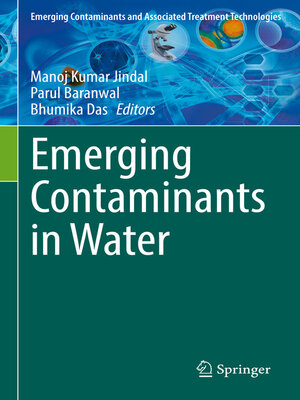Emerging Contaminants in Water
ebook ∣ Emerging Contaminants and Associated Treatment Technologies
By Manoj Kumar Jindal

Sign up to save your library
With an OverDrive account, you can save your favorite libraries for at-a-glance information about availability. Find out more about OverDrive accounts.
Find this title in Libby, the library reading app by OverDrive.



Search for a digital library with this title
Title found at these libraries:
| Library Name | Distance |
|---|---|
| Loading... |
This book provides comprehensive information on emerging contaminants in water, their sources, detection techniques, ecological and health impacts, and sustainable mitigation strategies. It emphasizes the urgent need for research and global collaboration to ensure the safety and sustainability of water resources. These emerging contaminants include per- and polyfluoroalkyl substances (PFAS), microplastics, pharmaceuticals, personal care products, pesticides, industrial and household products, metals, surfactants, industrial additives, radioactive elements and many more which pose potential risks to ecosystems and human health. While extensive research has explored their individual effects, there remains a critical gap in understanding their combined ecological impacts. Recent research underscores various contaminants' harmful effects, prompting efforts to develop new and more efficient removal techniques. While methods like adsorption and filtration show promise, biological methods offer a promising alternative with greater degradation efficiency. This book comprises all such information related to emerging contaminants in water systems and what could be the next step to mitigate their harmful impact in a sustainable manner. The book is structured into seven parts, covering the classification, sources, detection techniques, occurrence, ecological and health effects, and fate of key contaminants like microplastics and PFAS in aquatic ecosystems. It also explores mitigation strategies, including setting safe thresholds and implementing sustainable removal approaches. Through an in-depth review of current research and future directions, this book serves as a valuable resource for scientists, policymakers, and environmental professionals working toward mitigating the harmful impact of emerging contaminants on water systems.
Chapter 5 is available open access under a Creative Commons Attribution 4.0 International License via link.springer.com.







